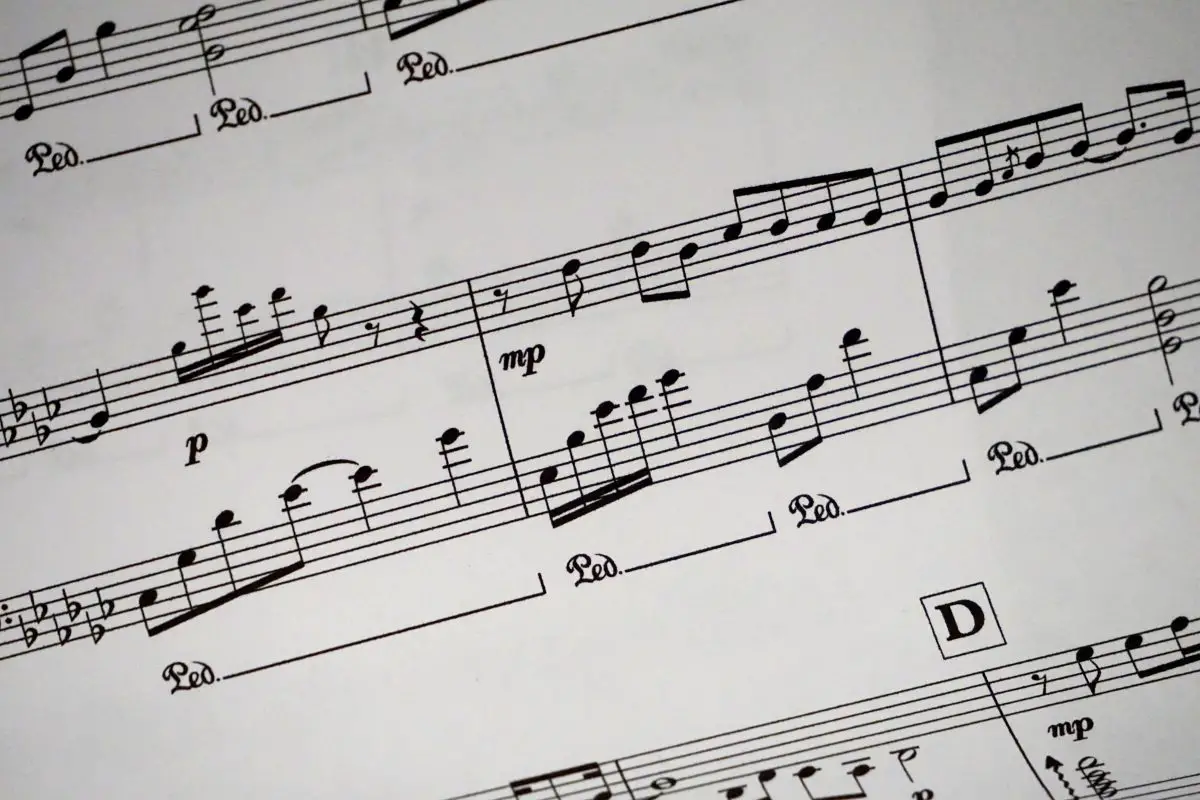I once met this uber-talented musician who could jam out on any instrument you handed him, but when it came to reading sheet music, he was totally lost at sea. He had the chops, the groove, and the soul, but without knowing the key signatures, he was missing a crucial piece of the puzzle. But what exactly is a key signature in music? Let’s explore the ins and outs of key signatures and why they’re the “key” to mastering your music production game.
What is a key signature in music? A key signature is a collection of sharp or flat symbols placed at the beginning of a piece of sheet music, indicating the notes that are consistently raised or lowered throughout the piece.
What is a key signature?
A key signature in music notation is a set of sharps (#) or flats (♭) placed at the beginning of a staff to indicate the tonality or key of a musical composition. These symbols information about the specific pitches that will be consistently raised or lowered throughout the piece.

For instance, let’s say you come across a piece with two sharps in the key signature. In this case, you’d know that every F and C note should be played as F# and C# unless otherwise indicated. This simple piece of information totally changes the way your music sounds and feels!
AKAI Professional MPK Mini MK3

AKAI Professional MPK Mini MK3
Why is understanding key signatures essential for music producers?
You might be thinking, “I’m a producer, not a classical musician—why should I care about key signatures?” Well, key signatures are the backbone of musical theory, and they play a huge role in how your tracks sound and feel. Let me break it down for you.
…knowing your key signatures allows you to create more cohesive and harmonically pleasing music.
First off, knowing your key signatures allows you to create more cohesive and harmonically pleasing music. When you understand which notes belong to a specific key, you can craft melodies and chord progressions that flow naturally and evoke the emotions you’re aiming for. This knowledge gives you the power to create tracks that resonate with your audience on a deeper level.
Moreover, understanding key signatures helps you communicate with other musicians and collaborators effectively. If you’re working with a singer or instrumentalist, they’ll need to know the key signature of the piece to perform it correctly. Knowing the key signature also makes it easier to transpose a song into a different key to suit the range of a vocalist or an instrument.
How do you identify different key signatures in sheet music?
When you’re looking at sheet music, the key signature is displayed right after the clef symbol at the beginning of each staff. It’s a series of sharp (#) or flat (♭) symbols placed on specific lines or spaces of the staff. To identify the key signature, you can follow these steps:
- Count the number of sharps or flats: Take note of how many sharps or flats are in the key signature.
- Use the Circle of Fifths: The Circle of Fifths is a super useful tool for understanding the relationship between key signatures. It’s a circular diagram that shows all 12 major and minor keys, along with their corresponding key signatures. For example, if there are two sharps in the key signature, they would be F♯ and C♯, indicating the key of D major or B minor.
- Determine the major or minor key: Once you locate the key signature on the Circle of Fifths, you can quickly identify whether it’s a major or minor key.

Let’s say you’re looking at a piece of sheet music with three sharps in the key signature. You count the sharps and then refer to the Circle of Fifths, which tells you that the key signature corresponds to A major or F# minor.
With a bit of practice, identifying key signatures will become second nature. And trust me, being able to quickly determine the key to a piece of music is a total game-changer for any music producer or musician.
What’s the difference between major and minor key signatures?
Major key signatures are known for their uplifting, happy, and energetic vibes. They use a specific pattern of whole and half steps between notes, giving them their characteristic sound. For example, C major is a popular major key signature that consists of all the white keys on a piano (no sharps or flats).
Minor key signatures, on the other hand, tend to evoke more introspective, moody, or melancholic feelings. They’re like the soundtrack to your favorite indie film—deep, emotional, and thought-provoking. Minor keys also follow a distinct pattern of whole and half steps, which sets them apart from major keys.
Take A minor, for instance—it’s the relative minor of C major, also using only the white keys on a piano. Despite sharing the same notes as C major, A minor has a completely different vibe. It’s great for creating tracks that tap into the darker, more introspective side of human emotions.
If you want even more tips and insights, watch this video called “Key Signatures – Everything You Need To Know in 6 minutes“ from the Brad Harrison Music YouTube channel.
Frequently asked questions (FAQ)
Do you still have questions about key signatures in music? Below are some of the most commonly asked questions.
What are the most common major and minor key signatures?
The most common major key signature is C Major, and the most common minor key signature is A Minor. These key signatures are popular due to their simplicity, as C Major consists of all the white keys on a piano, and A Minor shares the same notes as C Major but with a different starting point.
Can you change key signatures within a song?
Yes, you can change key signatures within a song. This is called modulation or key change, and it’s a common technique used to add variety, contrast, or emotional impact to a piece of music. To successfully modulate, it’s essential to understand the relationship between different key signatures and use smooth transitions between them.
Are there other types of key signatures besides major and minor?
While major and minor key signatures are the most commonly used, there are other types of key signatures, such as modal scales (e.g., Dorian, Phrygian, Lydian, and Mixolydian) and less common scales like the harmonic minor or melodic minor.
These scales can provide unique sounds and emotions, offering additional creative possibilities in music production.
Conclusion
Well, folks, we’ve reached the grand finale of our key signature symphony! We hope this article struck a chord with you and helped demystify the world of key signatures in music. So, did this post hit all the right notes for you? If you have any questions or thoughts, drop a comment below. I read and reply to every comment. Share this article with your fellow music enthusiasts, and don’t forget to check out my blog for more tips and tricks on music production. Thanks for reading, and happy producing!
Key takeaways
This article covered the essentials of key signatures in music. Here are some key takeaways:
- Key signatures define the tonal center of a piece of music and provide the foundation for its harmony and melody.
- Major key signatures evoke uplifting, happy, and energetic feelings, while minor key signatures tend to be more introspective, moody, or melancholic.
- The Circle of Fifths is a helpful tool for understanding the relationship between key signatures and identifying them in sheet music.
- Understanding and using key signatures effectively can enhance your music production skills, create more emotionally impactful tracks, and improve communication with other musicians.
- There are also other types of key signatures, such as modal scales and less common scales, like the harmonic minor or melodic minor.















